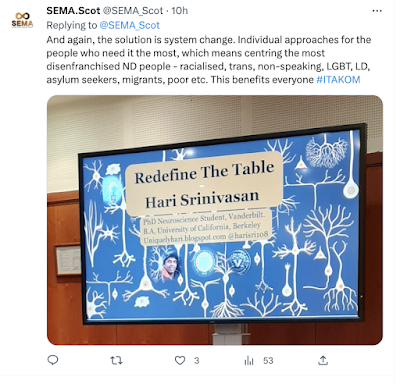Lexicon [Measures] - SSTPQ
The SSTPQ consists of 13 questions and measures three distinct constructs and aims to capture individuals' subjective experiences and perceptions related to cognition areas of.
- perception of time
- differentiation between self-voice and other-voice
- perception of PPS
Scoring is on a Likert scale and individual scores provide a total score. Interpretation may involve comparing the scores to established norms/controls
Limitations:
- Reliance on self report means social desirability bias and the limitations of introspection.
- Sub measures not explicitly stated
Potential Limitation in Autism Populations:
- Autistics may have atypical perceptions of time, self-voice and other-voice, and PPS.
- Sensory and cognitive processing differences in autism may influence the accuracy of self-report measures.
- Some may have difficulties expressing their experiences or perceiving these constructs in the same way as NT
- The SSTPQ may not capture the full range of submeasure variations observed in autism, as the questionnaire's dimensions and items may not align with the unique experiences and challenges faced by autistics










